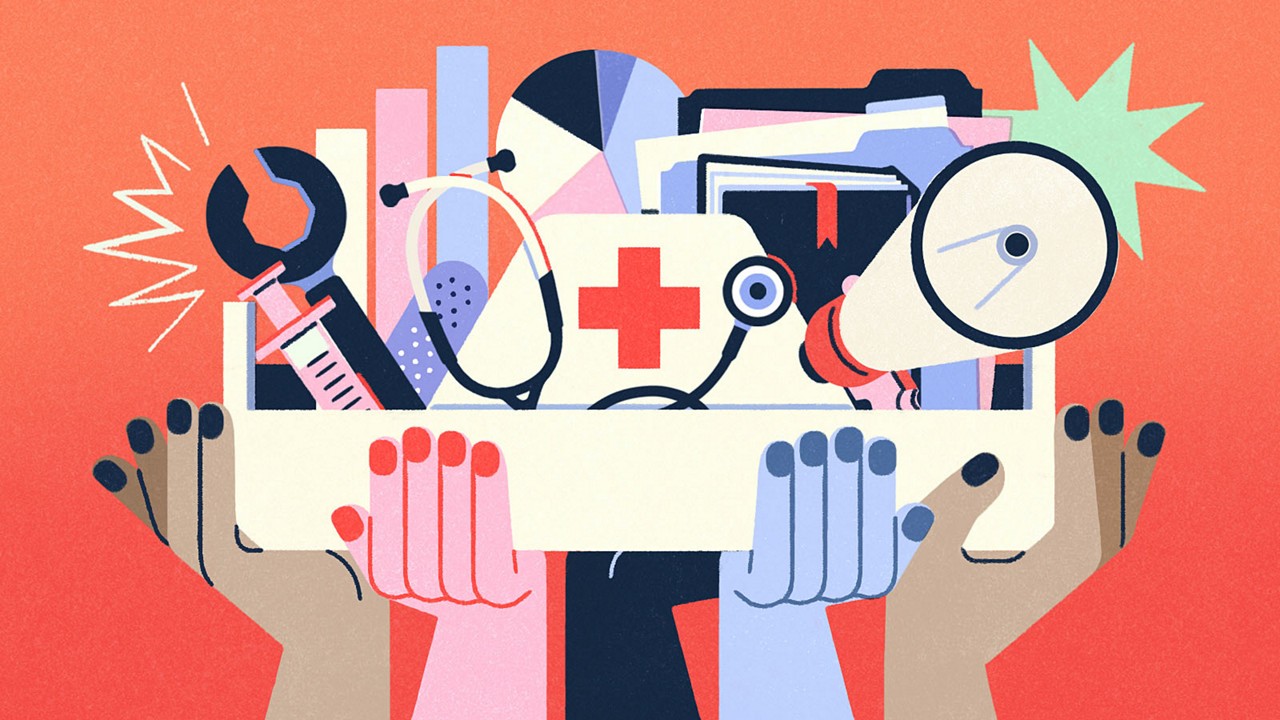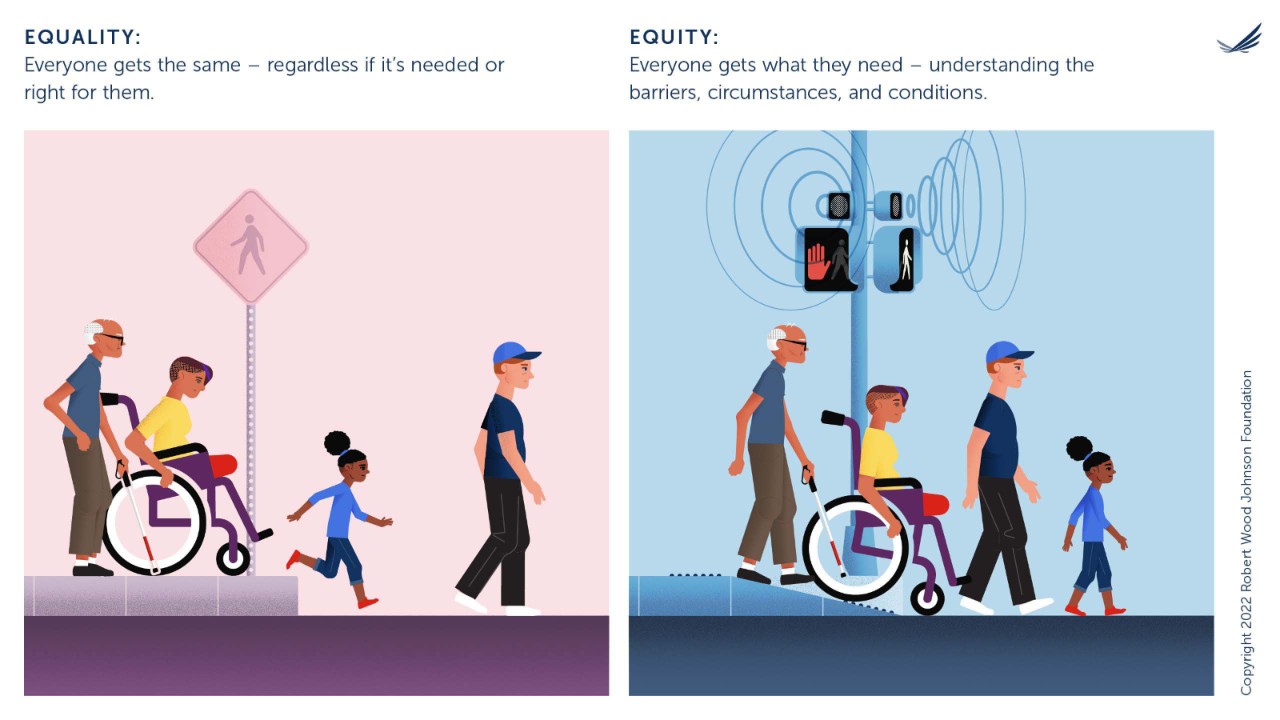Check out these resources that can inform progress toward health equity!

Powerful data, in-depth research, and wisdom from health equity champions can help us do our part in shaping healthier, more equitable, and more just communities.
That’s why, to kick off 2023, we’re sharing a brief roundup of resources that can help you advance health equity in your community.
1. Use these websites to gather data about community health.
These easy-to-navigate data generating sites can help build a stronger understanding of community conditions, amplify the experiences of residents, and inform efforts to advocate for policies, practices, and programs that foster health and wellbeing for all:
- Child Opportunity Index measures 29 factors that influence child health and well-being, revealing vast disparities in such basic amenities as healthy foods, good schools, safe housing, and playgrounds. This information is available by both Census tract and ZIP code and can be broken down by race and ethnicity.
- City Health Dashboard provides data on more than 40 measures and drivers of health for over 900 American cities and towns. These measures include low birthweight, opioid overdoses, children in poverty, smoking, physical inactivity, access to parks, insurance status, and more.
- Life Expectancy Calculator estimates life expectancy at birth by state, county, ZIP code, and all 67,000 Census tracts. Coupled with a companion interactive map, it reveals dramatic disparities that can exist in communities
- CUSP (COVID-19 U.S. State Policy) Database tracks state policies adopted during the pandemic to reveal how these policies influenced outcomes for communities that were hit hardest by the virus. For example, some government relief programs excluded certain low-wage, tipped, and gig workers. It also tracks mask mandates, stay-at-home orders, eviction protections, paid leave, and more that are within a few miles of one another.
2. Share this graphic on equity!

Given how people consume information in our fast-paced world, we recognize the power of a strong visual to inspire and educate. That’s why we’ve updated our popular “equity graphic” to help people understand the difference between equality and equity.
We surveyed readers of RWJF’s weekly newsletter, Advances, to inform the new image. Many respondents shared how useful the original visual was, but also offered suggestions to improve it.
We prioritized developing a clear graphic that was accessible and could be featured on the web, in social media, and in presentations. Our goal was to make it simple enough for a wide array of audiences to use and understand. We hope you find it thought-provoking and useful!
3. Delve into these captivating books by our staff, grantees, and partners.
Several of our colleagues have authored or contributed to books that mix personal stories, on-the-ground experiences, and insightful ideas to remind us of the opportunity to make a difference in our mission to advance health equity.
From the deeply personal memoir, The Beautiful Darkness: A Handbook for Orphans by RWJF senior communications officer Joshunda Sanders, to the thought-provoking The Contagion Next Time by Boston University School of Public Health Dean Sandro Galea, to the children’s books, Black Girl Shining and Black Boy Shining by researcher, educator, and advocate Rhonda Tsoi-A-Fatt Bryant, these bold voices offer moving, memorable, empowering perspectives on advancing racial justice and improving health.
4. Apply these communications tips to increase support for equitable policies.
There's no one-size fits all approach to advocacy messaging and media. While storytelling can be a powerful tool for engaging the public, it doesn't always move state legislators to action and can even backfire. Leading scholars conducted two studies: the first looked at communication to the general public, and the second communication to state legislators. Their research reveals that policy narratives—short stories that paint a mental picture of what a problem is, who is affected, and how it came to be—are particularly effective at increasing support among the general public. However, the same narratives were not effective at increasing support among state legislators. In fact, they appeared to deepen existing political divides.
Explore the best ways to raise public will and political will around an issue. Learn more about what works with state legislators and access a handy messaging guide on storytelling for social change!
Explore more research, resources, and perspectives this year and learn about new grant opportunities! SIGN UP for the Advances newsletter.
About the Author
Najaf Ahmad, senior managing editor, highlights stories and perspectives on how the Foundation is advancing health equity in communities across the nation.